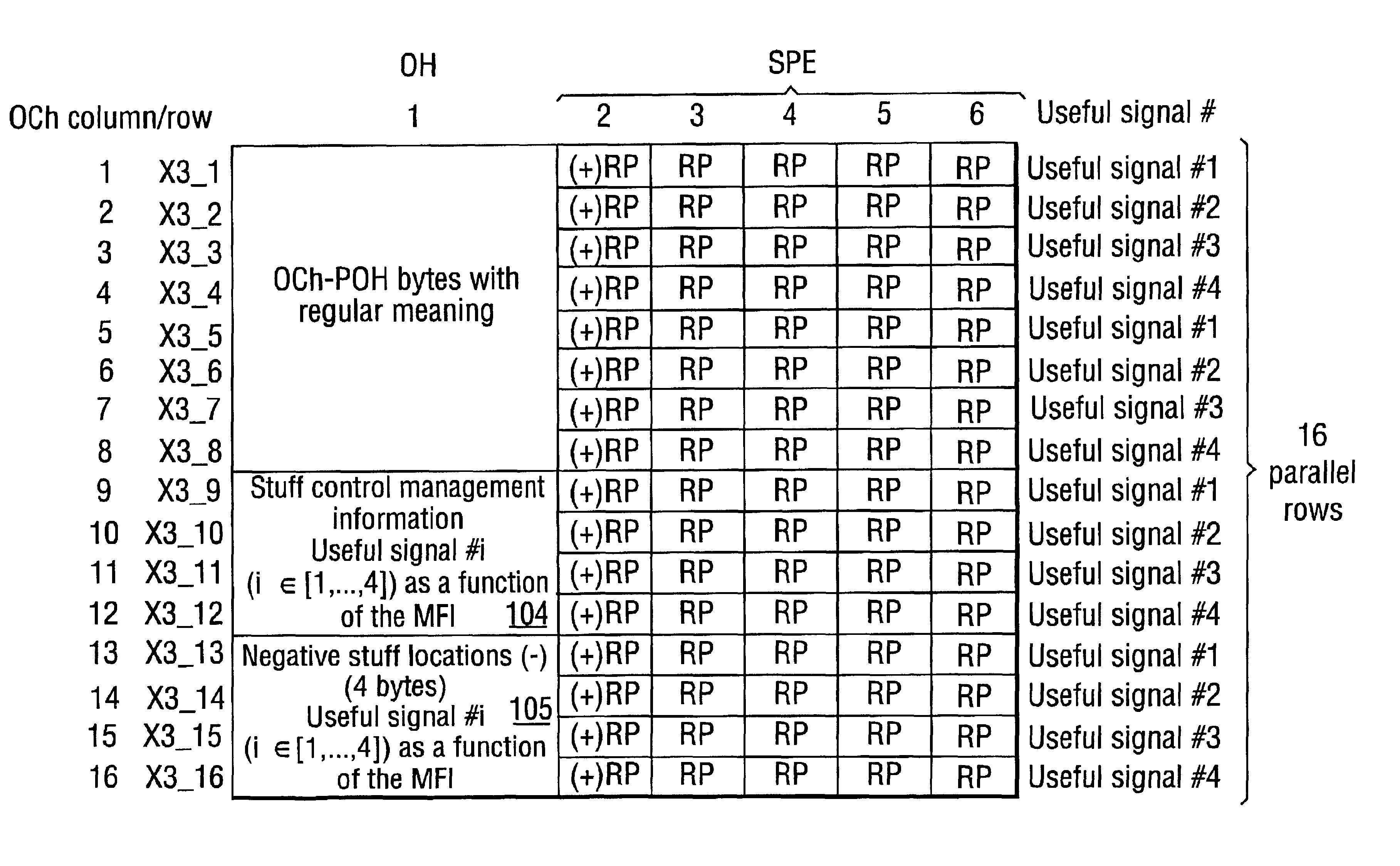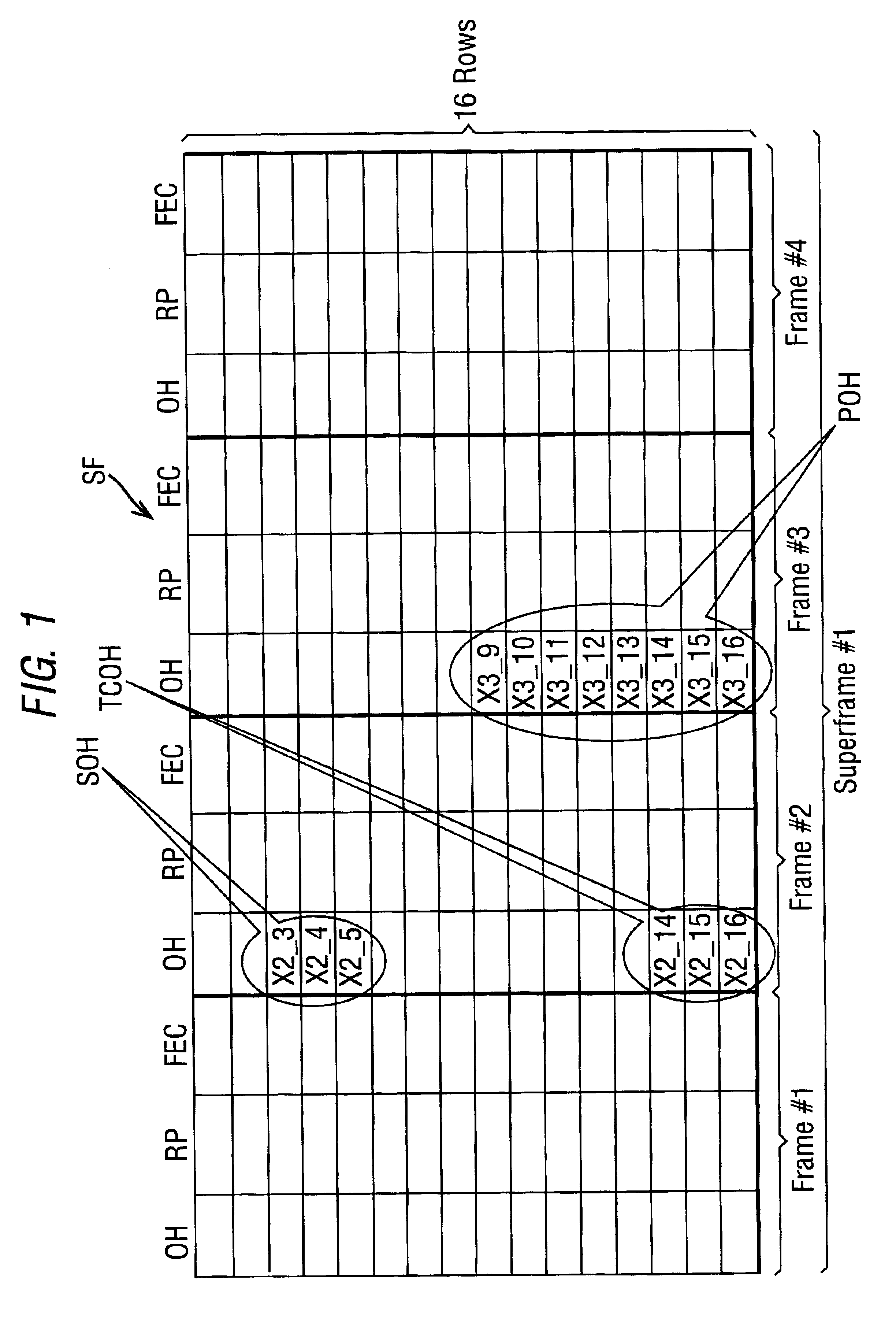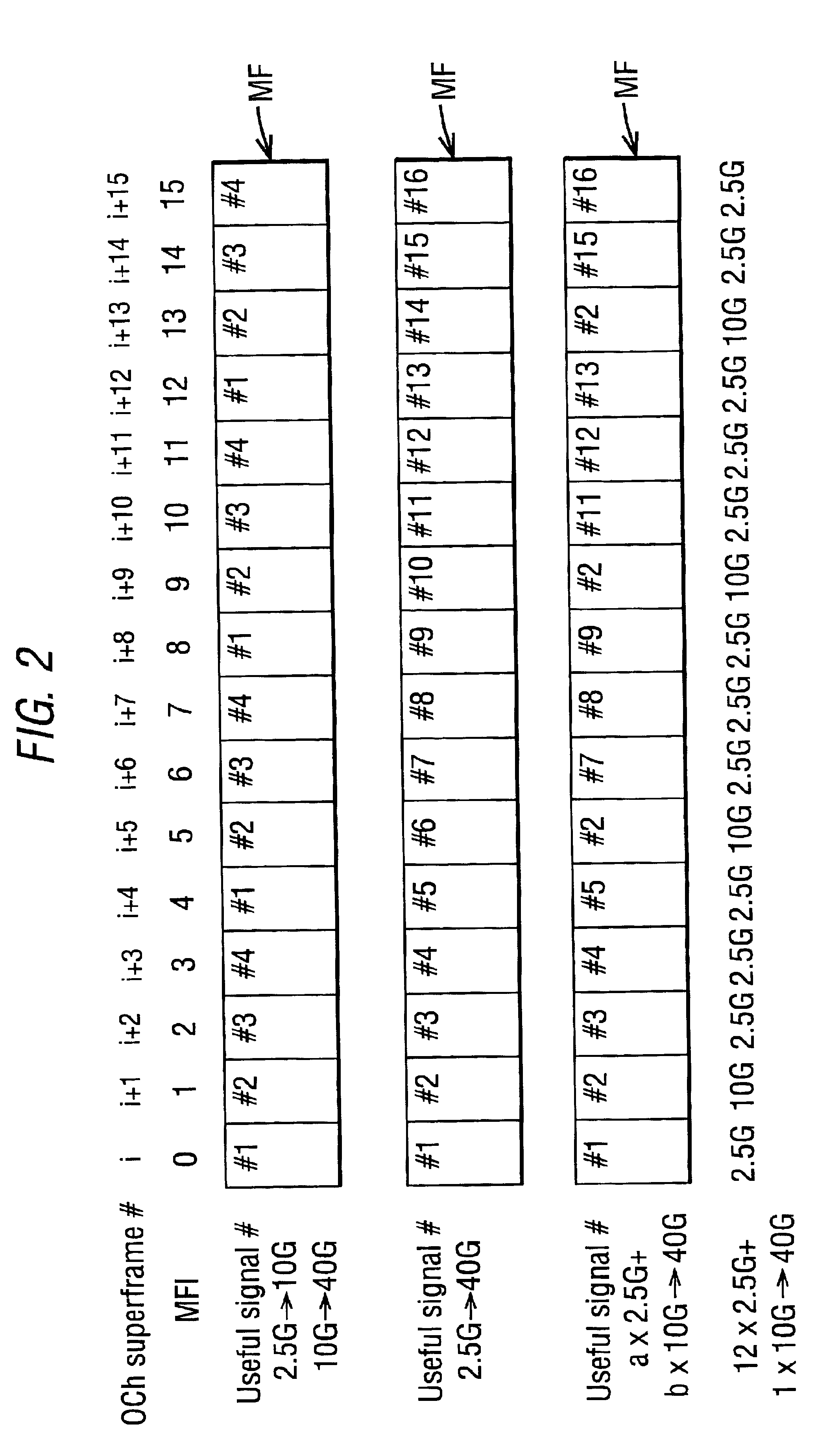Digital data transmission system
a data transmission system and digital data technology, applied in data switching networks, time-division multiplexing selection, multiplex communication, etc., can solve the problems of high processing complexity, high hardware and software cost, and the handling of different data rates, and achieve the effect of saving costs
- Summary
- Abstract
- Description
- Claims
- Application Information
AI Technical Summary
Benefits of technology
Problems solved by technology
Method used
Image
Examples
Embodiment Construction
[0050]The embodiments explained below relate by way of example to the regular superimposition of 4 useful signals (clients) (4×2.5 Gbit / s→10 Gbit / s or 4×10 Gbit / s→40 Gbit / s) or 16 useful signals (16×2.5 Gbit / s→40 Gbit / s) and to the mixed superimposition of 13 useful signals (12×2.5 Gbit / s+1×10 Gbit / s→40 Gbit / s) in relation to one carrier signal (server) in each case. Rate matching is provided by means of stuff locations 105. The exemplary embodiment operates according to the ITU-T G.975 Standard. With reference to FIG. 1, four of the OCh frames (frame #1 to frame #4) defined by the ITU-T G.975 Standard are combined to form one OCh superframe #1. Each OCh frame or frame contains an overhead OH, a section for embedding useful data (payload envelope) and a section for the forward error correction FEC. The data rates 10 Gbit / s and 40 Gbit / s for the carrier signal relate to the useful data rate. The data rates for the overall frame structure are approximately 10.66 Gbit / s and 42.65 Gbit / ...
PUM
 Login to View More
Login to View More Abstract
Description
Claims
Application Information
 Login to View More
Login to View More - R&D
- Intellectual Property
- Life Sciences
- Materials
- Tech Scout
- Unparalleled Data Quality
- Higher Quality Content
- 60% Fewer Hallucinations
Browse by: Latest US Patents, China's latest patents, Technical Efficacy Thesaurus, Application Domain, Technology Topic, Popular Technical Reports.
© 2025 PatSnap. All rights reserved.Legal|Privacy policy|Modern Slavery Act Transparency Statement|Sitemap|About US| Contact US: help@patsnap.com



